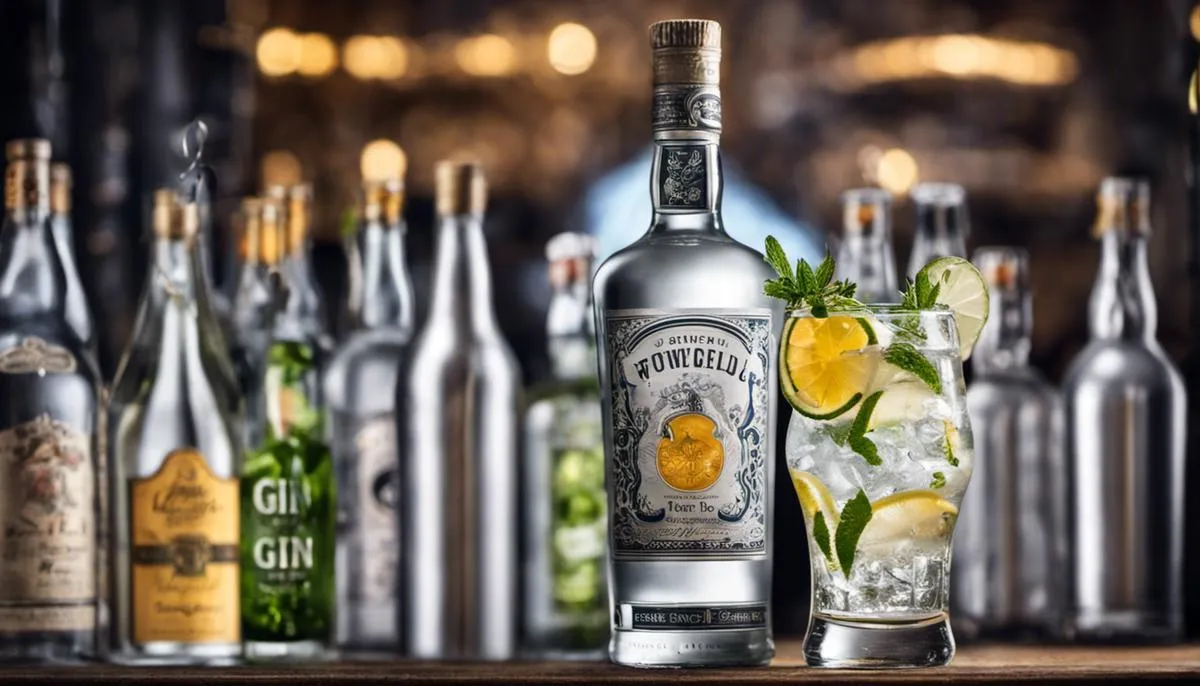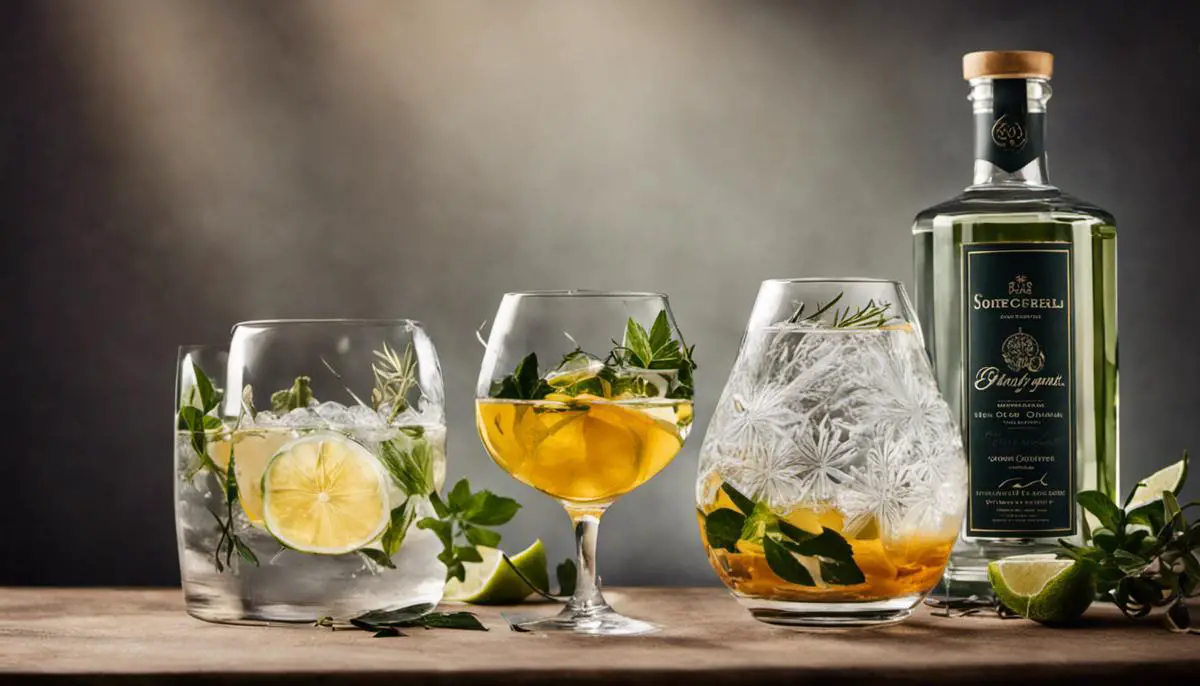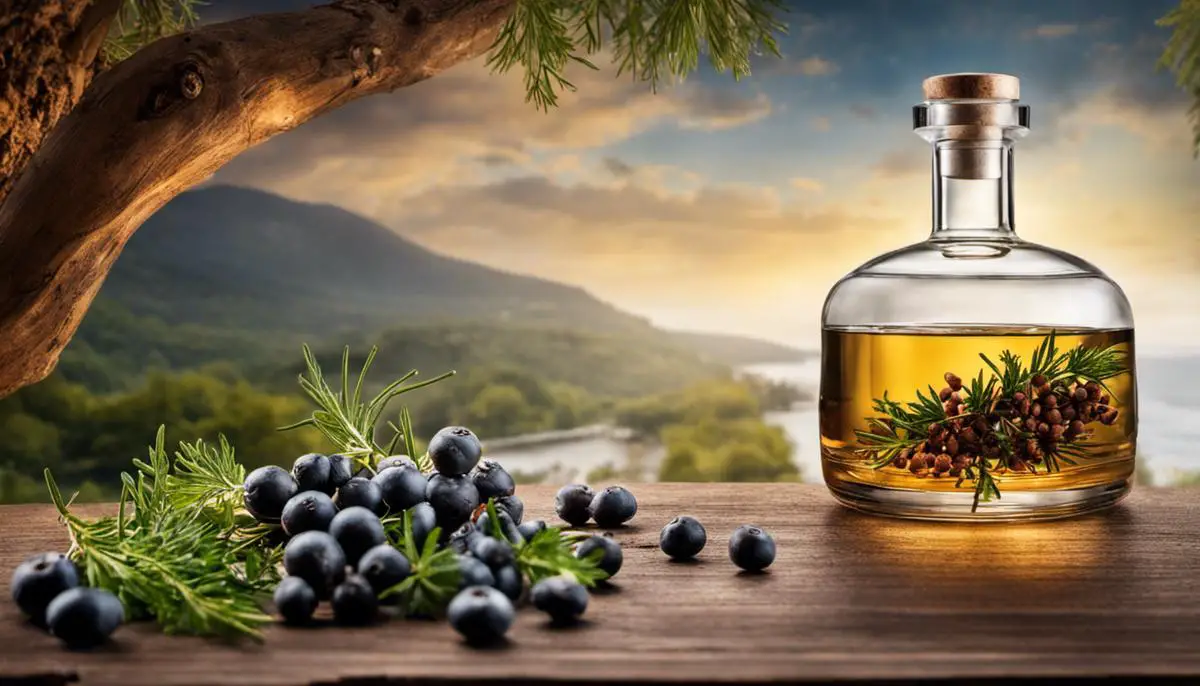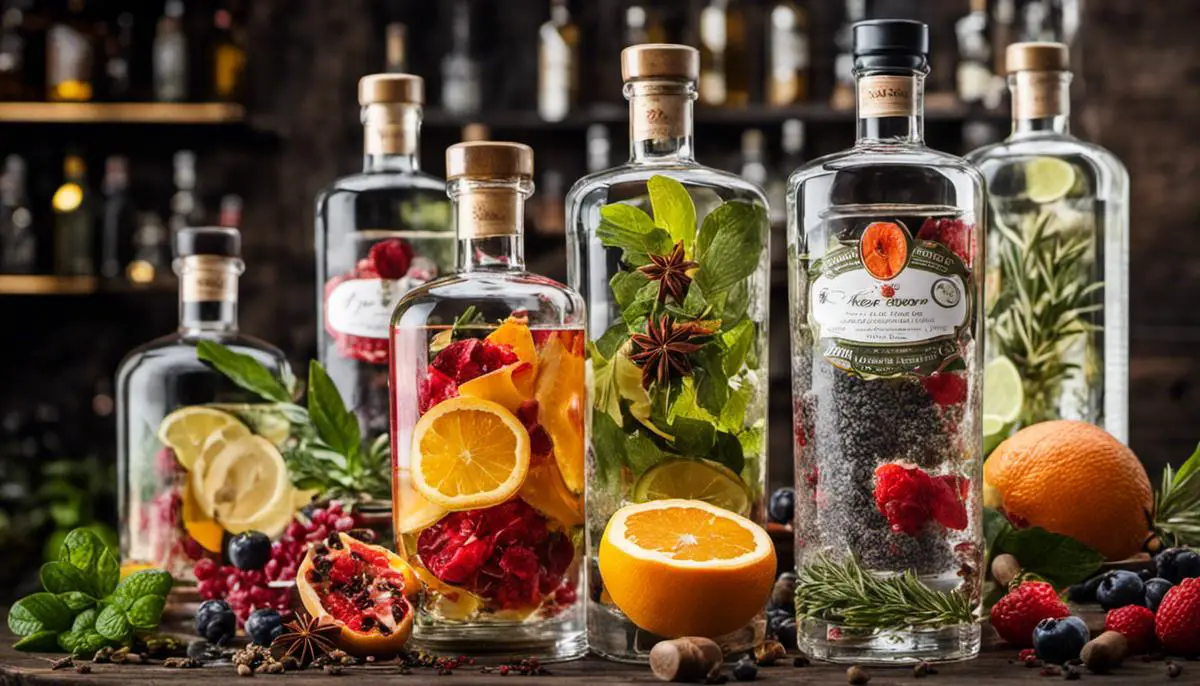Immerse yourself into the intriguing world of gin and tonic, a classic pairing, embodying remarkable stories and a captivating history. Through a captivating journey, this luminary essay will guide you through the origins of gin, its intriguing medicinal purposes, and its seamless marriage to tonic. Discover how different cultures, from the cool British Isles to the vibrant streets of Spain, have brought their own distinctive touch to this timeless cocktail. Embark on an exploration of the fundamentals of a tasteful gin and tonic, acquaint yourself with some of the most popular variations, and ultimately, learn to craft your own creativity-infused variations.
History of Gin and Tonic
Gin and Tonic: A Historic Duo
Gin and tonic, one of the most iconic duos in the world of cocktail drinks, holds an interesting history impacted by sociocultural factors, medicinal beliefs, and geographical locations across the globe. The history of gin and tonic began separately, both having different origins and uses before they collided to form the classic concoction known today.
The Origin of Gin
The origin of gin traces back to the Middle Ages, specifically in Holland, where it was initially created as ‘jenever,’ a juniper-infused spirit. Distilled for medicinal purposes, it was sold in pharmacies to treat ailments like gout, gallstones, and stomach complaints. It was during the Thirty Years War in the mid-17th century that gin took off in England. British soldiers fighting in the low countries were given a small spirit ration of Jenever, which they began referring to as “Dutch Courage.” Once these soldiers returned to England, they brought with them the taste for gin, leading to a surge in distilleries throughout the country.
The History of Tonic Water
Tonic water’s background, on the other hand, is intertwined with the history of colonialism. As the British expanded their influence in India and other malaria-prone regions, the risk of contracting the disease was high. Quinine, an extract from the bark of the South American cinchona tree, was known for its malaria-combatting properties. However, the bitter taste was off-putting, causing British officials stationed in India to mix the quinine with soda water and sugar, thus creating the first simple tonic water.
The Marriage of Gin and Tonic
The marriage of gin and tonic began during the 19th century British rule in India. In an attempt to make their quinine tonic more palatable, British officers started to add a measure of gin, a little sugar, and some ice and citrus. This iconic mixture of gin and tonic was not only a defence against malaria, but it also became a refreshing cocktail, giving birth to a legacy enjoyed by millions even today.
Global Variations
Across the globe, gin and tonic have taken various unique forms depending on local tastes and traditions. The Spanish gin tonic, which became popular in the early 21st century, has a heavy focus on garnishing. It is typically served in a balloon glass with a variety of botanicals to enhance the aroma and taste of gin. Some commonly used garnishes include citrus peel, juniper berries, and herbs. In Japan, the gin and tonic has been elevated to an intricate art form, featuring rare, domestically produced gins, artisanal tonic waters, and meticulously sculpted ice.
American variations on the gin and tonic, on the other hand, have often taken a more adventurous path. From using different types of gin like barrel-aged, Old Tom, and New Amsterdam, to adding bitters, elderflower liqueur, or muddled fruit and herbs—the mix is continually being reinvented.
The Evolution of the Gin and Tonic
The gin and tonic, originally a medicinal concoction, has evolved into a globally renowned cocktail. This progression has been shaped by a myriad of cultures and locations, resulting in numerous adaptations of the classic drink. Despite ongoing transformations, the gin and tonic remains faithful to its roots, simultaneously keeping pace with contemporary tastes and advancements.

Photo by anniespratt on Unsplash
Basics of a Gin and Tonic
Understanding a Gin and Tonic
A gin and tonic is a classic and elegant cocktail loved by many for its simplicity with an underlining complex taste-profile. Traditionally, it requires London Dry gin, renowned for its crisp, dry taste embellished with a strong flavour of juniper berries. This juniper-infused spirit harmonizes perfectly with the bitter-sweetness of the tonic water, resulting in a cocktail that tantalizes the palate.
The role of tonic water is integral in the concoction of a gin and tonic. It weaves a strand of sweetness and bitterness through the drink, thereby establishing a balance with the robust flavours of gin. Known for its effervescence, tonic water also adds a refreshing bubbly texture to this cocktail, making it an ideal choice for summer afternoons. The quinine in tonic water, which accounts for its unique bitterness, was historically included to deter malaria and would often be paired with gin to ease the consumption.
Ice is an indispensable component in a gin and tonic. Essential to keeping the drink chilled, Ice amplifies its refreshing quality and is crucial to maintaining the cocktail’s appeal. A gin and tonic best retains its coolness when the glass is completely filled with ice.
The use of citrus fruits like lime or lemon in a gin and tonic helps to counteract the drink’s bitterness. These citrus elements introduce a dash of zesty freshness to the cocktail. Although traditionally a wedge of lime is used, a slice of lemon is also a preferred choice for many, enhancing the cocktail’s layered nuance.
Preparing a basic gin and tonic is quite straightforward: Start by filling a highball glass with ice. Then, pour 1.5 – 2 ounces of gin, preferably London Dry gin and top it up with tonic water, stirring gently to mix them together. The gin-to-tonic ratio can be adjusted as per individual taste, with a 1:2 ratio commonly suggested. Finally, the cocktail is garnished with a slice of lime or lemon.
With time, this classic cocktail has observed several variations including the use of different garnishes like cucumber or infusing various gin flavours. Yet, the traditional gin and tonic, with its timeless synergy of flavours, remains a popular choice.
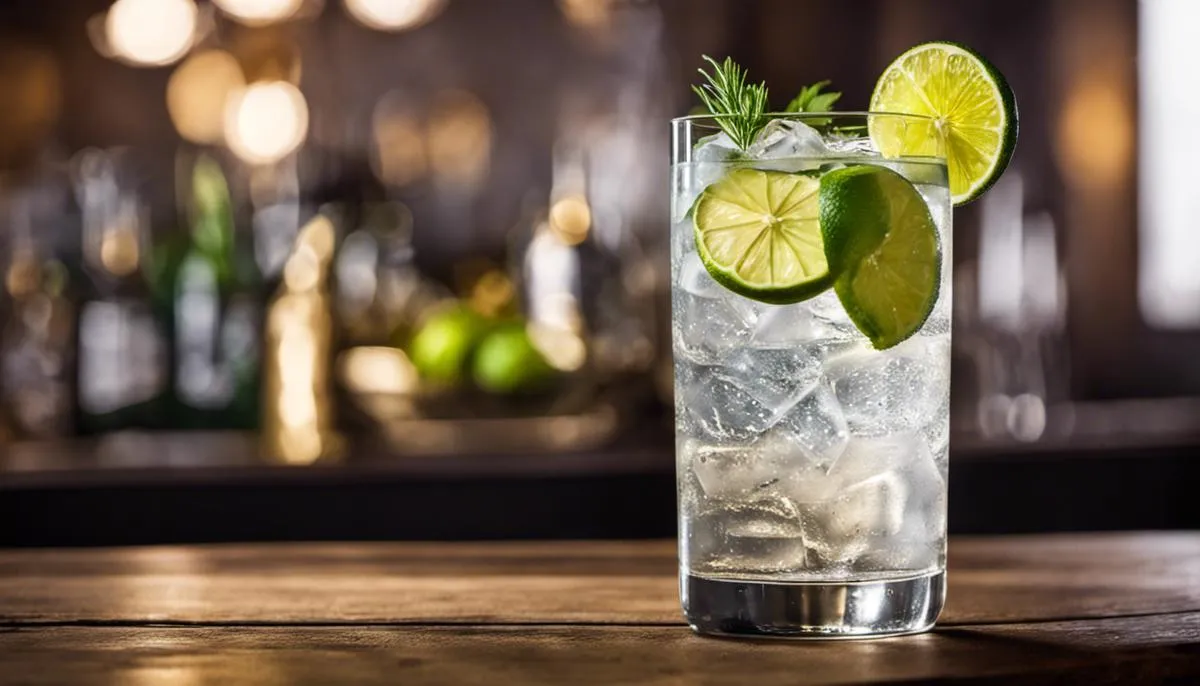
Popular Variations of Gin and Tonic
The Traditional Gin and Tonic
The quintessential Gin and tonic is a deceptively simple arrangement of gin, tonic water, and a garnish of lime or lemon slice. This garnish does more than just enhance the aesthetic appeal of the drink; it adds a refreshing, citrusy note that brings an extra depth of flavour. The typical recipe requires approximately 2 ounces of gin and about 4 to 5 ounces of tonic water. The drink is then topped off with a slice of tangy lime or lemon, adding zest to each sip. The quality of the drink is often reflective of the quality of gin and tonic water used, hence it is always recommended that one opts for the higher quality ones for the optimum Gin and tonic experience.
Flavored Gin and Tonic
Flavored Gin and tonic variations are attracting gin lovers globally. Popular varieties include those made with flavored gins like rhubarb, elderflower, and orange blossom. These flavored gins lend their unique profiles to the drink, making it fruitier or floral depending upon the flavor. Similarly, flavored tonic waters like elderflower tonic or Mediterranean tonic can further accent the flavors and add complexity to the drink.
Herbal Gin and Tonic
The herbal Gin and tonic is a green and leafy take on the traditional recipe. By adding a sprig of fresh herb like mint, rosemary, or basil to your drink, you can uplift the flavor profile creating a fragrant and refreshing beverage. Cucumber is another popular herbal addition, which can add a crisp and cooling element. You can muddle these herbs at the bottom of your glass before pouring in your gin and tonic to release maximum flavor.
Berry Gin and Tonic
Adding fresh, muddled berries to a gin and tonic can lend a colorful and sweet twist to the classic drink. The berries, such as raspberries, blackberries, or strawberries, bring a burst of fruity flavor that complements the botanicals in the gin beautifully. A mix of berries can also be used to create a vibrant, summery cocktail with a balanced, sweet-tart profile.
Spiced Gin and Tonic
This variation unleashes the potential of the gin and tonic to be a warm and cozy winter drink. Adding spices like star anise, cloves, and cinnamon sticks can give a unique aromatic note and additional warmth. Additionally, a dash of ginger can bring a spicy kick and digestive benefits, making this variation a health-conscious choice.
The Pink Gin and Tonic
The Pink Gin and Tonic is a fashionable variation, typically made by adding a splash of Angostura bitters to the classic recipe. The bitters lend the drink its alluring pink color and add depth with their bitter, tropical flavor. Some variations use pink gin, a gin that’s been infused with berry fruits. Garnishing with a twist of grapefruit peel can add a final, stylish flourish to this delightful cocktail.
The Spanish Gin and Tonic
Spanish Gin and Tonic, or ‘Gin Tonic’ as it’s known in Spain, is a lavish and flamboyant variation of the simple gin and tonic. The Spanish style lays heavy focus on the garnish, going beyond the customary lime to include a range of botanicals, fruits, and herbs. It’s served in a large balloon glass, allowing room for the flavors to breathe and mingle, offering a sensory experience with every sip.
Keep in mind, whichever variation of gin and tonic you opt for, it’s essential to balance the flavors perfectly. The gin, tonic, and any other added ingredients should harmonize and complement each other rather than dominate. Enjoy experimenting with your mix!
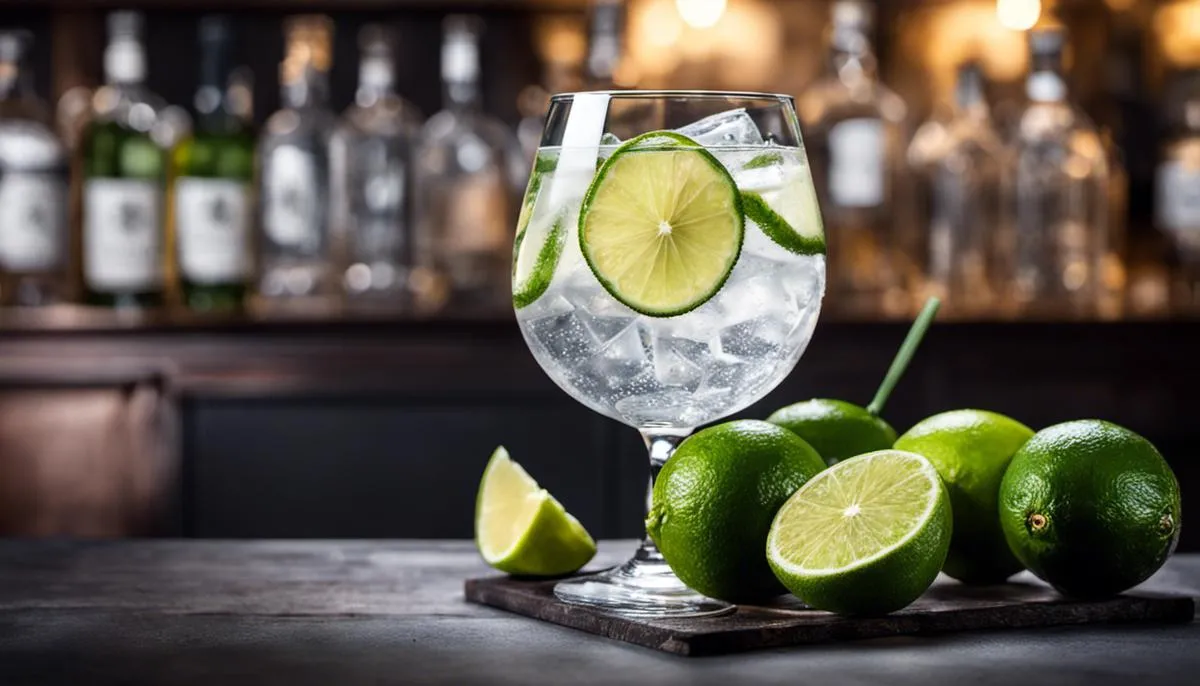
Creating Your Own Gin and Tonic Variations
Creativity is limitless
The realm of gin and tonic is teeming with possibilities, inviting those with a sense of adventure to concoct unique blends. Whether you’re exploring a boutique gin distillery or a trendy cocktail bar, an array of gin and tonic combinations will present themselves. It might be a traditional London dry gin coupled with a hearty Indian tonic, or perhaps a citrusy gin paired with an aromatic Mediterranean tonic. But, why limit yourself? The allure of gin resides in its botanicals, which could include angelica root, citrus peel, or even a dash of exotic saffron. Though, the true magic of a gin and tonic lies in its minimalism. The subtle interplay between gin, tonic water, and a chosen garnish isn’t about complex recipes but rather a voyage of flavor exploration to delight your taste buds.
Balancing Act
Creating your own gin and tonic variations begins with understanding balance. It’s about getting the proportions right for your taste. The traditional gin and tonic ratio is 1:2 or 1:3, but feel free to adjust this based on your preference. If you’re a gin enthusiast, you may lean towards a stronger gin: tonic ratio. If you want to savour your drink slowly on a hot summer’s day, perhaps a lighter blend with more tonic might be more refreshing. And it’s not just about the amount of gin and tonic, adjust the variety and amount of garnishes you favor as well.
Garnish Galore
Garnishes play a crucial role in transforming your drink by infusing additional flavours and aromas. A slice of cucumber or a sprig of fresh rosemary can add refreshing notes to your gin and tonic, while spices like clove or star anise can bring a warming essence, perfect for cooler seasons. A personal favorite of mine is the pairing of lavender-infused gin with an elderflower tonic, garnished with a fresh sprig of mint. The floral lavender notes combine beautifully with the sweetness of elderflower, and the mint gives it an invigorating touch.
Befriend Your Tonic
While gin is undoubtedly the star of the show, never underestimate the importance of the tonic. The right tonic can lift the botanicals within the gin to the forefront, while the wrong one might overpower or clash with the gin. Classic, Indian, aromatic, or Mediterranean tonics each bring something unique to the table, so test each one to see how their bubbles and quinine content compliment your chosen gin.
Embrace Experimentation
The key to creating your own gin and tonic variations is to embrace experimentation. Don’t be afraid to explore and mix flavours. Use a variety of gins, tonics, and garnishes. Taste the gin neat before deciding on a tonic partner. Pair complementary tastes and flirt with contrary flavors.
The Last Sip, Not The Least
Knowing when to stop your variation is vital, a gin and tonic should be a symphony of flavors, not a cacophony. It isn’t purely about the quantity of ingredients you throw in, but the quality and palate negotiation of the chosen elements. Remember – simplicity is the key. Once you start mastering this, you will find that creating gin and tonic variations is not only immensely fun, but also incredibly rewarding. After all, the joy of discovery is best savored — just like a well-mixed gin and tonic.
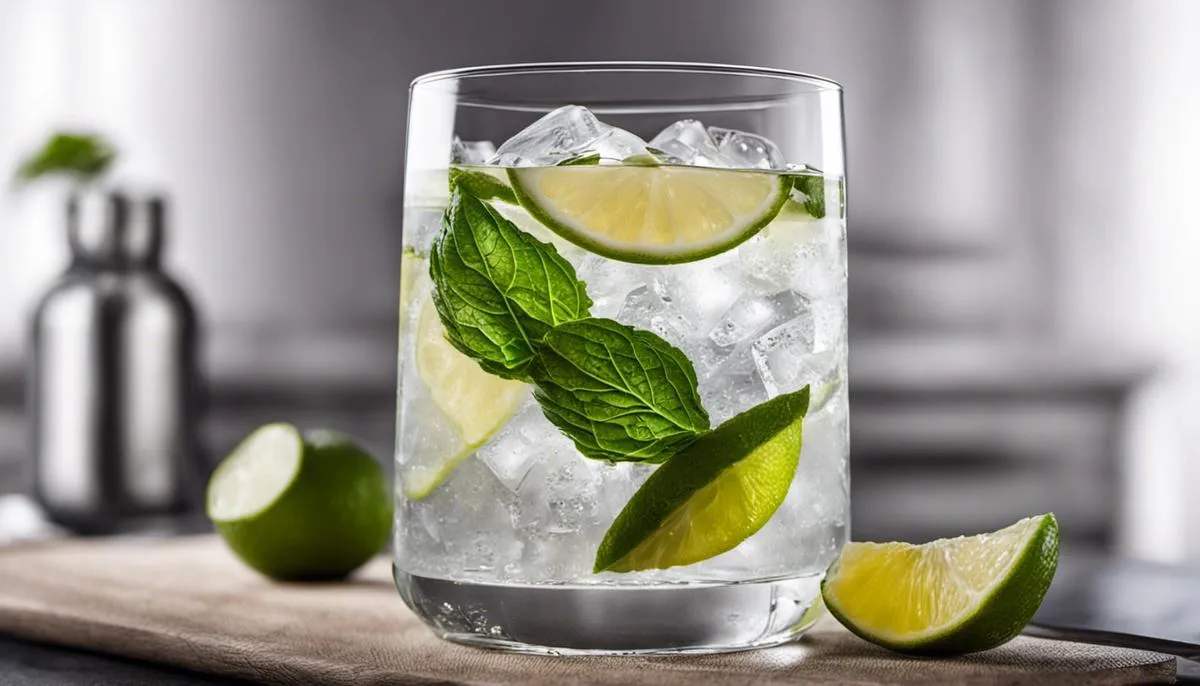
After this comprehensive deep-dive into the entrancing world of gin and tonic, there’s no doubt you’re equipped with sufficient knowledge to not only enjoy this classic cocktail but to innovate it in countless ways. The histories, recipes, tips, and tricks shared throughout this journey have been designed to invite you to the infinite possibilities of this cocktail. So, as you pour your gin, splash your tonic, and select your commando of complementing flavors, remember that making a gin and tonic is not just about the cocktail. It’s about the history, the experiences, and ultimately, the joys of creation and exploration. So here’s to you, future mixologist, may your gin and tonic always be refreshing, your flavors daring, and your experiences, unforgettable!

